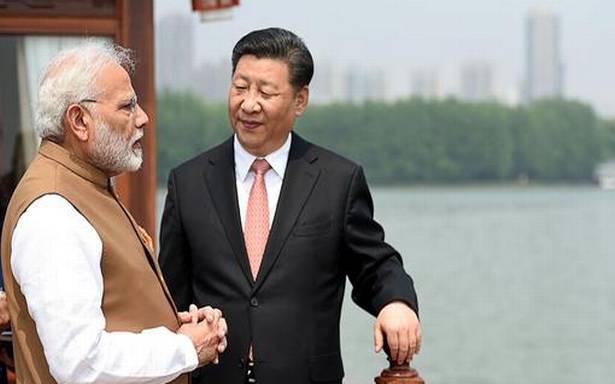China’s latest intrusion in Ladakh, apparently to fortify Aksai Chin may have its roots in the Wuhan informal summit of 2017, after which, Beijing has juggled with a range of options to engage and restrain India to protect its core interests.
After the Wuhan informal summit between Prime Minister Narendra Modi and Chinese President Xi Jinping in April 2018, China activated the diplomatic track in order to arrive at an understanding with India on managing the shared interests of Beijing and New Delhi in their neighbourhood. This initiative was in tune with Beijing’s broader aspiration of expanding international support for its Eurasia-centered Belt and Road Initiative (BRI).
Also read: Analysis: Pakistan factor behind India-China stand-off in Ladakh
But just in case diplomacy did not work for many reasons, including India’s growing ties with the United States under the Indo-Pacific doctrine, a plan-B also began to take shape, with heavy reliance on Pakistan.
Pakistan’s inclusion in Beijing’s strategic calculus to counter India’s perceived tilt towards the Washington’s Indo-Pacific strategy was spotlighted when the Chinese “invited” to Beijing all the pillars of the Pakistani state — Prime Minister Imran Khan, chief of the army staff Qamar Javed Bajwa, and head of the Inter Services Intelligence Lt. Gen. Faiz Hameed on October 8, 2019. The meetings in the Chinese capital took place in the backdrop of India’s abrogation on August 5 of sections of the Kashmir centred Article 370 — a move which had already been unambiguously slammed by both Pakistan and China. Ahead of these meetings, India had also participated in the upscaled dialogue of the Indo-Pacific quad at the level of Foreign Minsters on the sidelines of the United Nations General Assembly session in New York.
Gilgit-Baltistan
China’s core interests have dictated that India should be firmly dissuaded from considering recovery of Gilgit-Baltistan to fulfil its long-stated goal of unifying Kashmir, in pursuit of a unanimous parliamentary resolution passed in 1994. China has also been vocal about retaining Aksai Chin — the essential link between Tibet and Xinjiang. “Aksai Chin is the essential link between Xinjiang and Tibet, and China’s national highway 219 passes through this passage. Aksai Chin is therefore central to China’s territorial unity and the one-China principle,” a Chinese academic, who did not wish to be named, earlier told The Hindu.
By the time Mr. Modi and Mr. Xi met at Wuhan, Beijing had already begun to sink billions of dollars in the China Pakistan Economic Corridor (CPEC) which covered Gilgit-Baltistan. From Beijing’s perspective, any Indian attempt to take over Gilgit-Baltistan, would wreck CPEC — the flagship of the Belt and Road Initiative (BRI). Mr. Xi had staked his personal prestige in the project, which would provide China with access to the Indian Ocean through the Gwadar port. It would also help reduce Beijing’s dependence on the Malacca straits, dominated by t

